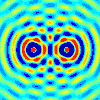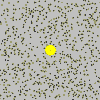publications
publications by categories in reversed chronological order. generated by jekyll-scholar.
2024
- RAM: Resource Allocation for Multi-agent Maritime EnvironmentIn International Conference on Informatics in Control, Automation and Robotics, 2024forthcoming
- Keep Sailing: An Investigation of Effective Navigation Controls and Subconscious Learning in Simulated Maritime EnvironmentIn International Conference on Information Technology-New Generations, 2024
- Threatmap: A Framework for Enhancing Security Awareness and Decision-Making for Naval AgentsIn Proceedings of the 26th International Conference on Harbor, Maritime and Multimodal Logistic Modeling & Simulation (HMS 2024), 2024
-
- Early Classification of Intentions for Maritime Domains Using Deep Learning ModelIn IEEE International Conference on Automation Science and Engineering (CASE), 2024Submitted
2023
- icinco23Maritime Dynamic Resource Allocation and Risk Minimization Using Visual Analytics and Elitist Multi-Objective Optimization2023
2021
- IETAn innovate approach for retinal blood vessel segmentation using mixture of supervised and unsupervised methodsIET Image Processing, 2021
2019
- AIMEA semi-supervised approach to segment retinal blood vessels in color fundus photographsIn Conference on Artificial Intelligence in Medicine in Europe, 2019
- IbPRIARetinal blood vessel segmentation: A semi-supervised approachIn Iberian Conference on Pattern Recognition and Image Analysis, 2019
1967
- Vision

1956
1950
1935
1920
1905
- Über die von der molekularkinetischen Theorie der Wärme geforderte Bewegung von in ruhenden Flüssigkeiten suspendierten TeilchenAnnalen der physik, May 1905
- Ann. Phys.Un the movement of small particles suspended in statiunary liquids required by the molecular-kinetic theory 0f heatAnn. Phys., May 1905
- On the electrodynamics of moving bodiesMay 1905
- Ann. Phys.Über einen die Erzeugung und Verwandlung des Lichtes betreffenden heuristischen GesichtspunktAnn. Phys., May 1905


